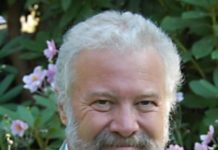
Editor’s Note:
In this series dedicated recycler and volunteer Barb Little will discuss the Columbia Shuswap Regional District’s focus on Zero Waste, its plans for curb-side pick up for Revelstoke in 2010, composting, Extended Producer Responsibility, the Revelstoke Recycling Directory and alternatives like the Hornby Island Free Store. She will also feature some local recycling superstars, explain the Mechanical Sort Facility and clarify what exactly can — and cannot — be recycled.

When recycling first started here in the 1980s, local pioneer recycler Jane McNab was an inspiration. Although only cardboard, glass and tin were then recyclable, she reduced her family of four’s garbage to one tiny bag, challenging Revelstokians to do better.
Okay. Let’s admit it: recycling can be a nuisance. You have to wash it, flatten, remove labels, store it, take it away, etcetera, but things really are getting easier. We no longer have to sort recyclables and by the fall of 2010 the Columbia Shuswap Regional District (CSRD) plans to have residential kerbside recycling in place.
“Last month I asked for expressions of interest for kerbside pickup,” said Carmen Fennell, the CSRD’s waste reduction facilitator. “We want to consider all options so it’s too early to say how the new system will work.”
However, she did confirm the CSRD will supply the bins and that taxes will go up.
“The City is not going to bid on the recycling contract,” said Darren Komonoski, Revelstoke’s Public Works operations manager. ” We won’t compete with the private sector.”
Research indicates kerbside recycling reduces garbage volumes drastically. A solid waste composite study done for the CSRD by Technology Resources Inc identified organic waste as the largest component of our garbage at 29.6%, followed by paper, 21.7% and plastic at 15.8%
Now that tins, paper and glass are tossed together, some doubt they can be effectively separated.
“It all goes to an Automated Sort Plant in Richmond that uses magnets, lasers, electrostatic charges and high powered air jets to sort,” explained Fennell. “Sensors detect the difference between a #7 plastic and a #2, then blast a high pressured air stream directly at a particular bottle shooting it into a designated bin.”
Part of the CSRD’s solid-waste management plan is supporting what’s called Extended Producer Responsibility. According to its newsletter, The Loop, “manufacturers are required to be financially or physically responsible for their products after their useful life. The BC Government has committed to adding two new product categories every three years… the first being mercury-containing light bulbs and thermostats, and expansion of the existing electronics category. Expect these programs to be launched in 2010.”
We can make this easier. Help reduce packaging, plastics and waste. Talk with your wallets. Support businesses that offer bulk sales, have eliminated Styrofoam and plastic takeaways, or offer discounts to customers using their own mugs. Eating out? Take your own containers for leftovers — a hip new trend. Use cloth bags for shopping (keeping them in your car is useful). And generally rethink your junk.
What’s Recyclable? Tin, aluminium and steel food cans, newspaper, all un-coated paper, all paperboard, such as cereal, detergent, and other boxes, flattened cardboard, glass bottles and jars (but no mirrors, window glass, light bulbs, chinaware, drinking glasses or ceramics), clean plastic containers graded 1, 2, 4 and 5, (but no Styrofoam or plastic bags). For further clarification call CSRD at 1-888-248-2773, or visit www.csrd.bc.ca.
Coming up next: local recycling heroes, eco-savvy entrepreneurs willing to turn your junk into treasure and what to stockpile for the Hazardous Waste and Electronics Fairs.



